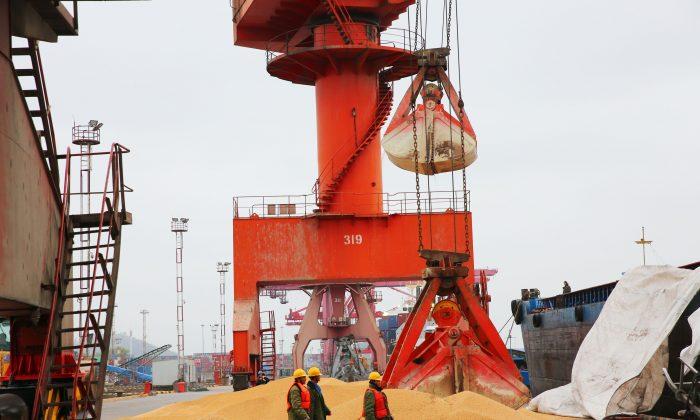News Analysis
The coronavirus pandemic is crippling manufacturing, heightening the potential default risk for Chinese corporations that borrowed $1.6 trillion in U.S. dollar-denominated bonds.
China’s total government, corporate and household debt rose to 303 percent of GDP in the first quarter of 2019, from 297 percent in the same period a year earlier, according to the Institute of International Finance (IIF), a Washington-based private global financial industry association.
Moody’s analytics chief economist Mark Zandi warned in December that with the corporate debt reaching $13 trillion, or about 100 percent of GDP, it had become a threat to China’s “financial system and the broader economy.”
Chinese companies issued $1.4 trillion of new corporate bond debt in 2019, with 90.5 percent of cash raised by state-owned enterprises (SOEs). Because of international investor confidence that Beijing would bailout its SOEs, an increasing amount of China bonds were issued offshore and denominated in U.S. dollars to get lower interest rates.
With economic growth falling to its lowest rate in three decades and Enodo Economics reporting that China suffered net capital outflow of -$748 billion, 4.9 percent of Chinese privately-owned enterprises (POEs) defaulted on their bond debt in 2019. But In a real shock to investors, $2.9 billion of the $18.6 billion of defaults were “dollar bonds.”
The highest profile default was the collapse in late November of the Tianjin city-backed commodities trader Tewoo Group. The company defaulted on $2.05 billion in debt, including $300 million of dollar bonds sold mostly to international investors.
The South China Morning Post reported that the rapid spread of the coronavirus across China has put added pressure on Chinese “dollar bond” issuers, making it extremely difficult for POEs and SOEs to raise new cash or convince bondholders to rollover their U.S. dollar debt repayments.
S&P Ratings analyst Chang Li commented that even if the Chinese regime successfully controls COVID-19, the global virus spread could still have secondary impacts to Chinese companies. He warned: “The outbreak could pose a challenge to the cash flow and liquidity [of Chinese firms] at least in the first half of this year.”
China ran large current account surpluses for the last 20 years. But prior to the COVID-19 outbreak, the surplus had shrunk from 10.12 percent of GDP in 2007 to 1.26 percent last year. China ran a $7.1 billion trade deficit in January and February, its first monthly deficits since 2012. Chinese import demand was strong for medical supplies and raw materials to make safety masks and hospital beds, but exports shriveled with factories closed and tens of millions of people quarantined.
“If the virus lingers longer than expected, the economy will take a sharp hit, and Beijing will be in the awkward position of finding ways to inject larger stimulus measures without leading to more debt problems down the road,” said Andrew Collier, managing director at Hong Kong’s Orient Capital Research.
Bloomberg reported that $8.6 billion of China’s highest-stressed company’s offshore dollar bonds are maturing in 2020, with about $2.1 billion coming due in March. With world stock and lower quality corporate bond markets crashing on March 12, there is seems little hope that the Chinese regime will organize a last-minute bail-out.





